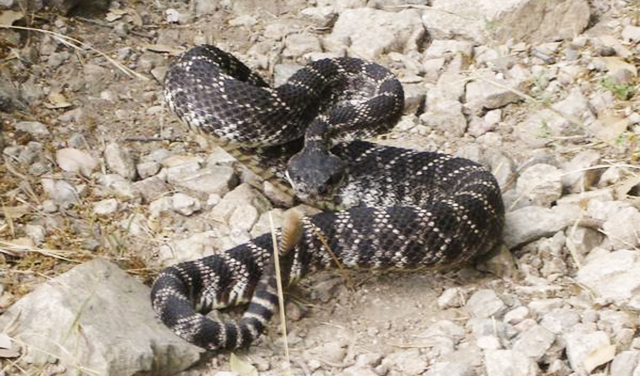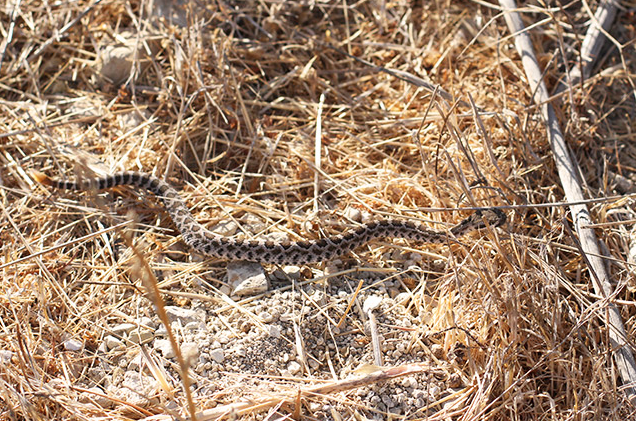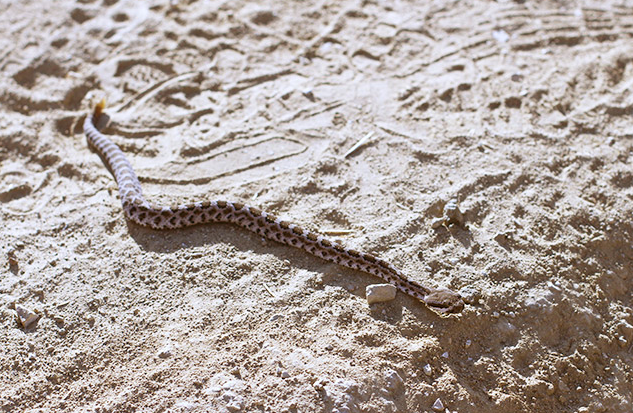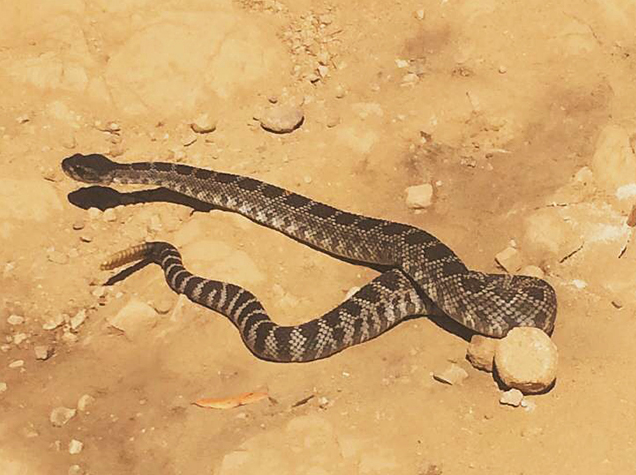| | --by Floris Gierman A few years ago I was hiking in Sequoia National Park with my family. Right when we started our hike we saw 2 snakes which made me extra alert to the fact that they were around. I was walking in front with my wife and parents behind me on a single track trail. The trail made a pretty steep left turn against a rock wall that was head high and out of no-where from the left a rattlesnake striked at me from about 2 feet away. I FREAKED OUT and within a split second I jumped to the right, the snake moved quickly from the rock onto the trail. I thought he was going after me, so I got up and fell again, this time almost down the steep side of the trail. Luckily I came out with no injuries but it definitely scared me. In the past few years of hiking and running trails, I’ve encountered about 10 snakes, including a few poisonous rattlesnakes. I run a lot of trails solo in the middle of nowhere, so I wanted to figure out exactly what to do if a snake bites me on a remote trail? Below is a summary of things I’ve learned about first aid for snake bites after talking to the Snake Bite Poison Line (1-800-222-1222 available 24/7), after doing my own online research and after posting my snake questions on Reddit Running. The best info came from Jordan Benjamin, a herpetologist specialized in venomous snakes. I’m just sharing this info because it might help you one day: • No first aid is much better than performing bad first aid. Don’t cut at or around the site of the bite, don’t compress the bitten limb with a cord or tight bandage, don’t attempting to extract or neutralize venom using electricity, fire, permanganate, salt, black stones, mouths, mud, leaves, etc. • All Snake Bite Kits are dangerous and should not be used. This was also confirmed by the Snake Bite Poison Line. • A lot of snake bite patients injure themselves by panicking directly after a snake bite, by tripping over a rock or tree trunk, or by falling off the side of the trail. Staying calm is important! After a snake bite, walk about 20-30 feet away from the snake. • Find a safe place to sit down asap. The venom can rapidly diffuse into your system, this can drop your blood pressure too low to pump all the way to your head while standing. Sitting down reduces your chance of fainting within the first few minutes. If you faint, it shouldn’t be more than a few minutes. • Remove any rings, watches, tight clothing and anything else from the bitten limb, because the swelling will make it a lot bigger soon. • Take 5 minutes to calm down and plan your evacuation. The only effective treatment for a snake envenomation is the right anti-venom to neutralize it. |
• A sharpie can be a great help for emergency personnel to assess the severity of your snakebite. Circle the location of your snake bite and write down the time next to it. Draw a circle around the border of the swelling and write down the time. Write down all the things you’re experiencing that are not normal, with the time next to it. Examples are: metallic taste in your mouth, changes to sense of smell, sudden loss of vision, double vision, visual disturbances, ringing in the ears, headache, nausea and vomiting, bleeding from anywhere, dizziness, shortness of breath, etc. The most common signs and symptoms are pain and swelling.
• Update this info every 15 or 30 minutes as the swelling moves up the limb and your symptoms develop.
• Make contact via cell phone. If this is not possible, walk slowly to get help. Drink some water and take some calories if you have any. Some snake bite victims walk several miles after serious snake bites to their legs. They make it out fine because they made it out to medical care. This is much better than waiting for help if you can’t reach anyone. Don’t let the fear of “raising your heart rate and increasing the speed of venom circulation” prevent you from moving to get to care. Be very cautious about driving yourself to a hospital, since some bites have serious side effects that could suddenly limit your ability to drive.
Preventing a snake bite is obviously better than dealing with a snake bite. Here are a few ways to reduce the risks of snake bites while on the trail:
• Be aware that there could be snakes where you’re running.
• Watch where you’re placing your feet, be extra aware on rocky, sunny areas, pockets of leaves and logs across the trail. If you’re off trail, the odds go up because there are more rocks and cracks and less people to scare the snakes away. Watch out when running through tall grass and weeds.
• Step on a rock or log, not over it. This way you can spot a snake that may be sheltering under it and take action quickly.
• Watch out when sitting down on a rock or tree stump, you might be sitting on a snake.
• Don’t try to chase the snake off the trail, this is why most people get bit by snakes.
• Don’t run with headphones on trails, or have at least 1 earbud out.
• Snakes tend to be near water, especially if it’s in a dry environment. If you’re near a spring or river, keep an extra eye out.
• Since snakes are cold-blooded, they’d like to come out when it’s warm and sun themselves on rocky areas or trails. They like to be on the edge of a sunny patch. If you come across a sunny patch, your encounter chances increase.
• Most venomous snakes in the U.S. rest during the day. The chances of running into one are higher in the mornings and early evenings, when their activity might be a bit higher.
• In the spring, after snakes have hibernated together, the frequency of sightings goes up. In the fall, when they retreat to a hiding place to spend the cold winter months, they are on the go, so higher chances to encounter a snake. Most snake bites occur between April and October.
Things to bring on your trail visits that help with a snake bite:
• Phone
• Sharpie
Getting bitten by a snake can be deadly, especially if you’re on your own on a remote trail. The following story is a good explanation of how a snake bite would feel: I Should Be Dead. Each year, about 8,000 venomous snake bites occur in the US and about 5 of those people die. You’ve got a good chance of survival if you seek medical attention immediately.
To summarize: try to stay calm, sit down, remove anything tight, document your situation, contact help.
To see the original article and pictures, go HERE.




 RSS Feed
RSS Feed